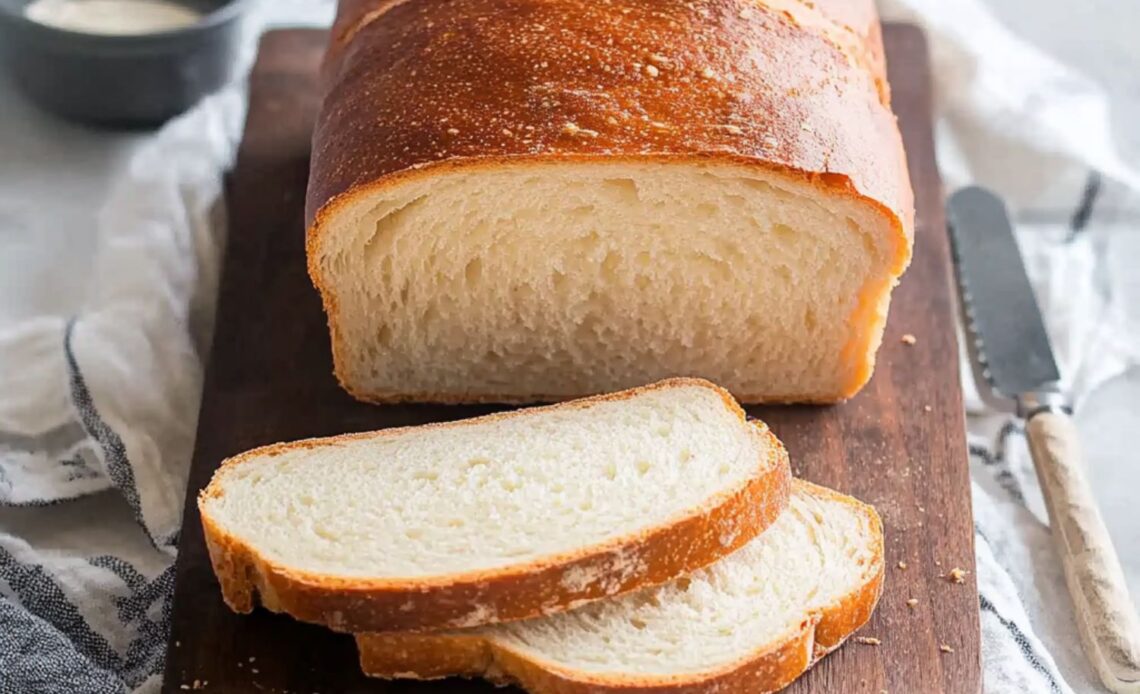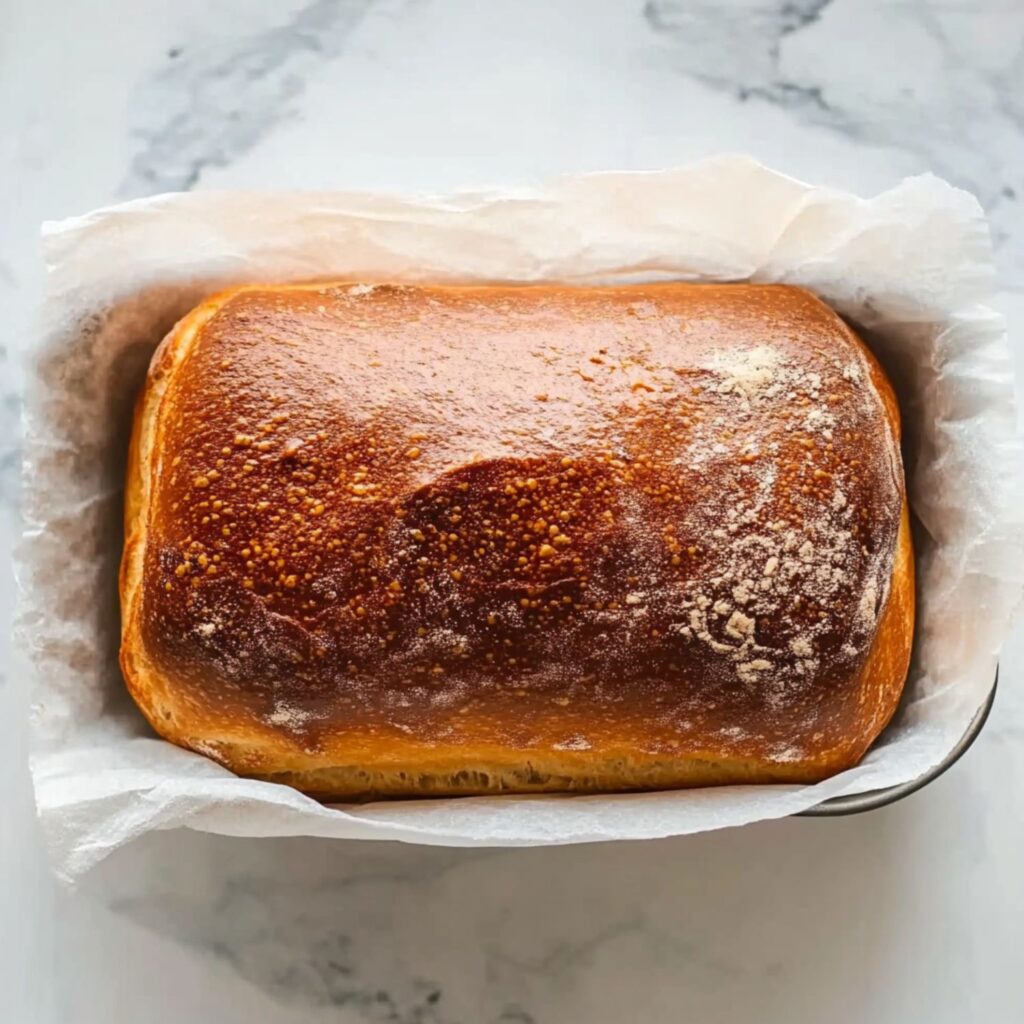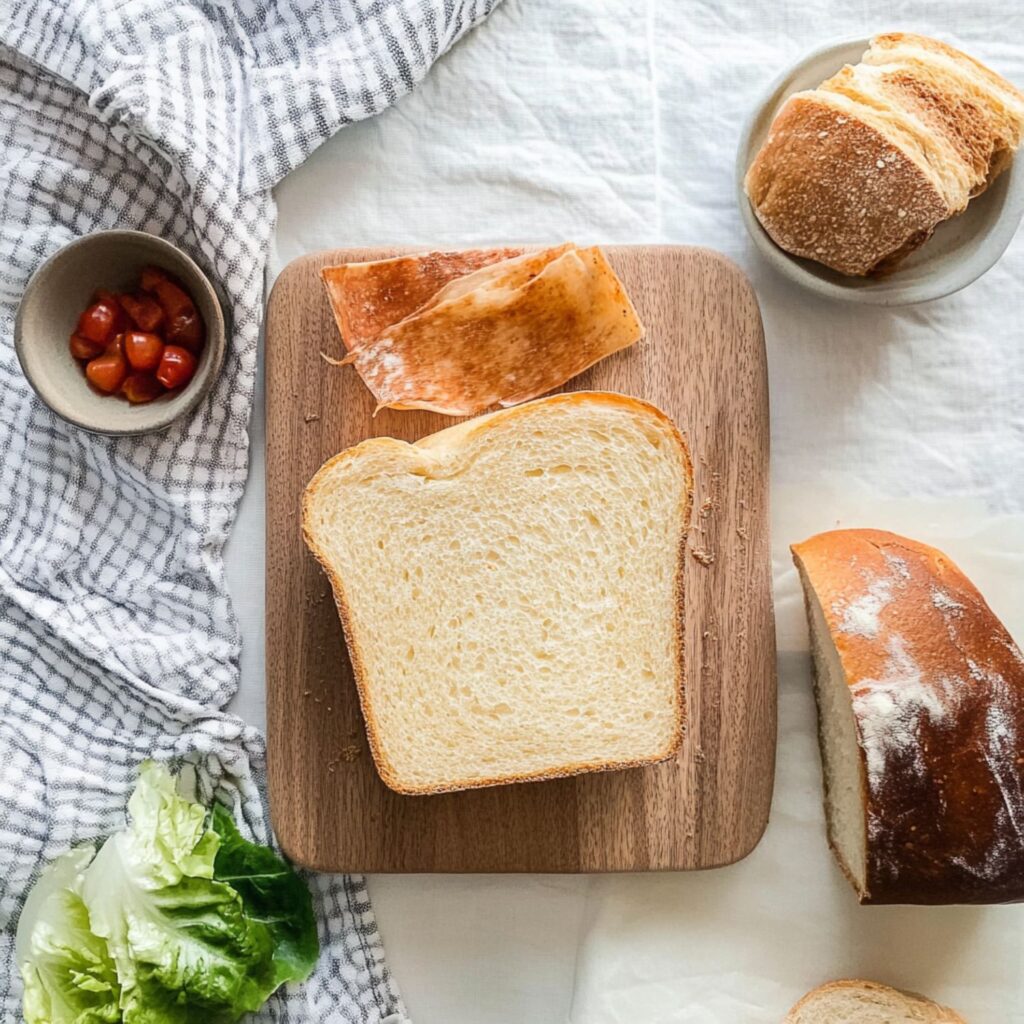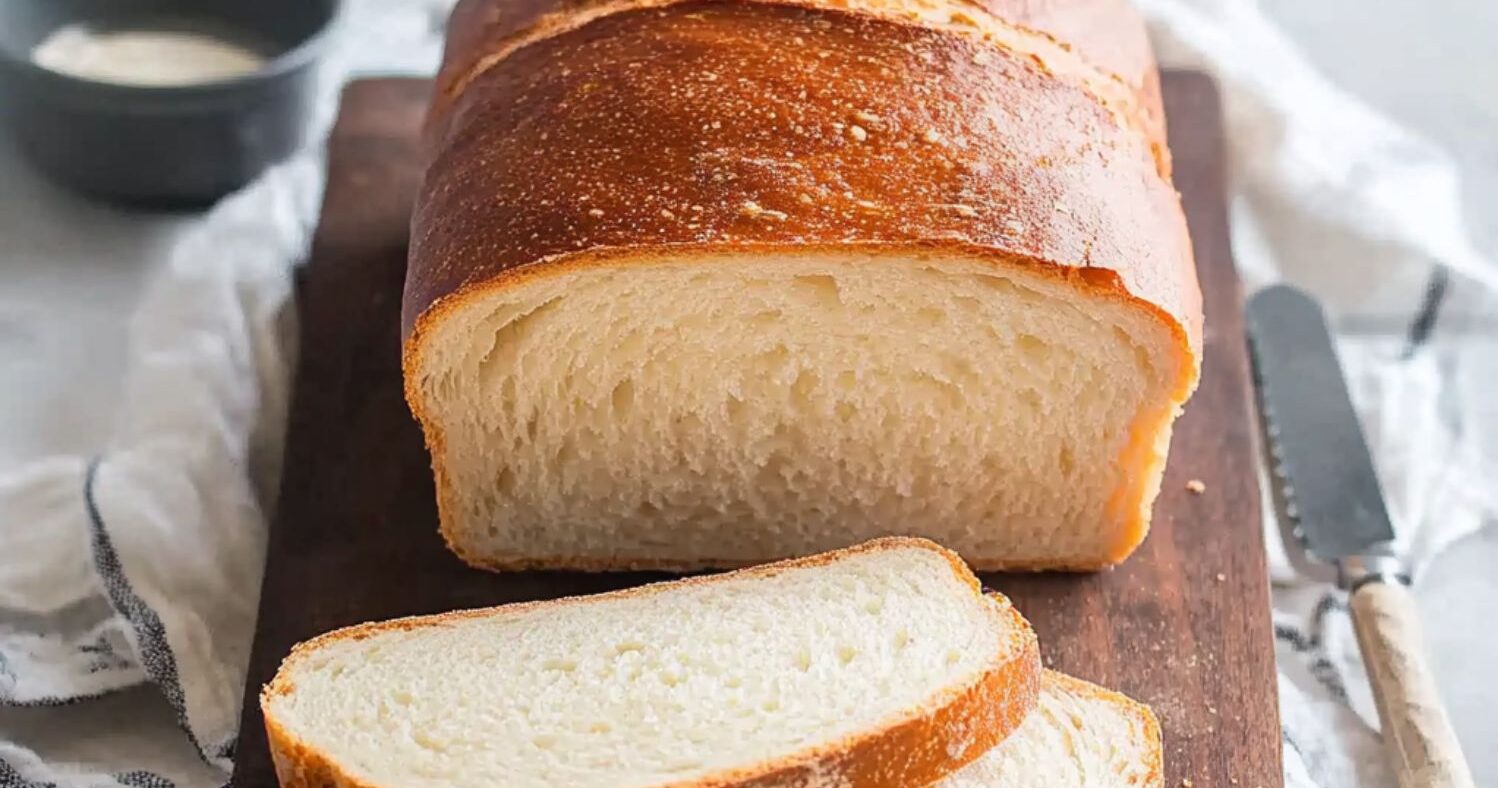
There’s nothing quite like the aroma of freshly baked bread wafting through your kitchen, and sourdough sandwich bread takes the experience to another level. With its light and airy texture, delicate sweetness, and thin, golden crust, this bread is the perfect canvas for all your favorite toppings. From turkey sandwiches to classic peanut butter and jelly, it’s a versatile staple that elevates every bite.
The magic lies in the sourdough starter, which lends the bread a moist crumb and a subtle tangy flavor. Unlike store-bought options, this homemade loaf stays fresh for days. And when it starts to stale, it transforms beautifully into French toast or crispy croutons, ensuring nothing goes to waste.
Although this bread takes a little time—two days to be precise—the results are more than worth it. The longer proofing times allow the wild yeasts to work their magic, breaking down the flour for a loaf that’s not only delicious but also easier to digest. Perfect for a weekend baking project, this recipe promises to become a cherished part of your kitchen repertoire.
Why You’ll Love This Recipe
- Delicious Tang: The sourdough starter adds a unique tangy flavor that sets this bread apart.
- Soft Yet Sturdy: Light and fluffy with a tender crumb, it’s sturdy enough to hold your favorite sandwich fillings.
- Versatile Uses: Ideal for sandwiches, toast, or even as a base for French toast and croutons.
- Homemade Goodness: No preservatives, just wholesome ingredients for a healthier choice.

Ingredients Overview
- Sourdough Starter: Provides a natural leavening and a delightful tang.
- Bread Flour: Ensures a strong dough that’s easy to slice and holds its shape well.
- Honey: Adds a touch of sweetness without overpowering the bread’s flavor.
- Butter: Enhances the richness and contributes to a tender crumb.
- Salt: Balances the flavors and strengthens the dough.
How to Make the Recipe
Step 1: Prepare the Dough
In a large mixing bowl, combine 1/2 cup (113g) of active sourdough starter with 1 1/4 cups (282g) of water and 2 tablespoons of honey. Stir in 3 1/2 cups (420g) of bread flour, 2 teaspoons (10g) of kosher salt, and 4 tablespoons (56g) of softened unsalted butter. Mix thoroughly until the dough comes together, then cover and let it rest for 30 minutes to hydrate.
Step 2: Knead and Bulk Ferment
Turn the dough onto a lightly floured surface and knead for 8-10 minutes until it becomes smooth and elastic. Transfer it to a lightly oiled bowl, cover with a damp towel, and allow it to rise at room temperature until it doubles in size, about 4-6 hours.
Step 3: Refrigerate Overnight
Gently deflate the risen dough and shape it into a ball. Cover it tightly with plastic wrap and refrigerate overnight. This slow fermentation develops deeper flavor and enhances the bread’s texture.
Step 4: Shape and Proof
Remove the dough from the refrigerator and roll it out into a rectangle on a lightly floured surface. Roll it tightly into a log and place it seam-side down in a greased or parchment-lined 8×5-inch loaf pan. Cover loosely and allow it to proof at room temperature until it rises about 1/2 inch above the pan’s edge, approximately 2-3 hours.
Step 5: Bake and Cool
Preheat your oven to 375°F. Score the top of the loaf with a sharp knife and brush it with melted butter or an egg wash for a golden crust. Bake for 40-45 minutes, or until the internal temperature reaches 200°F. Remove the loaf from the pan and cool on a wire rack for at least 30 minutes before slicing.

Tips for the Best Recipe
- Active Starter: Ensure your starter is bubbly and doubles in size before using.
- Kneading: If the dough feels sticky, let it rest for 30 minutes to hydrate and become easier to handle.
- Flour Choice: Use bread flour for a sturdy loaf; avoid whole wheat or rye for this recipe.
Variations to Try
- Substitute honey with white or brown sugar for a slightly different flavor.
- Use milk instead of water for a richer, brioche-like texture.
- Add soaked seeds, nuts, or dried fruit for added texture and taste.
Frequently Asked Questions (FAQs)
1. Can I use all-purpose flour instead of bread flour?
Yes, but the bread will have a softer crumb and less structure.
2. How do I know my starter is ready?
A ready starter doubles in size within a few hours after feeding and has visible bubbles.
3. Can I skip the overnight chill?
You can, but the flavor won’t be as developed.
4. How do I freeze this bread?
Slice it first, then wrap tightly in foil and freeze for up to 3 months.
5. Can I add herbs or spices?
Absolutely! Mix in dried herbs or spices for a flavorful twist.

How to Store and Reheat
- Storage: Wrap the loaf in plastic wrap and keep it at room temperature for up to 1 week.
- Freezing: Slice and double-wrap in foil. Defrost at room temperature and toast slices as needed.
- Reheating: Toast slices directly from frozen or warm the whole loaf in a 350°F oven for 10 minutes.
Conclusion
Sourdough sandwich bread is a true delight, combining the rustic charm of sourdough with the practicality of a sandwich loaf. Whether you’re making sandwiches, toast, or croutons, this bread is a versatile and flavorful choice. Its rich, slightly tangy flavor pairs beautifully with sweet and savory toppings alike.
Ready to bake this masterpiece? Share your creation with us and don’t forget to follow Ava Foodie on Pinterest for more inspiring recipes. Let’s make every meal memorable!



